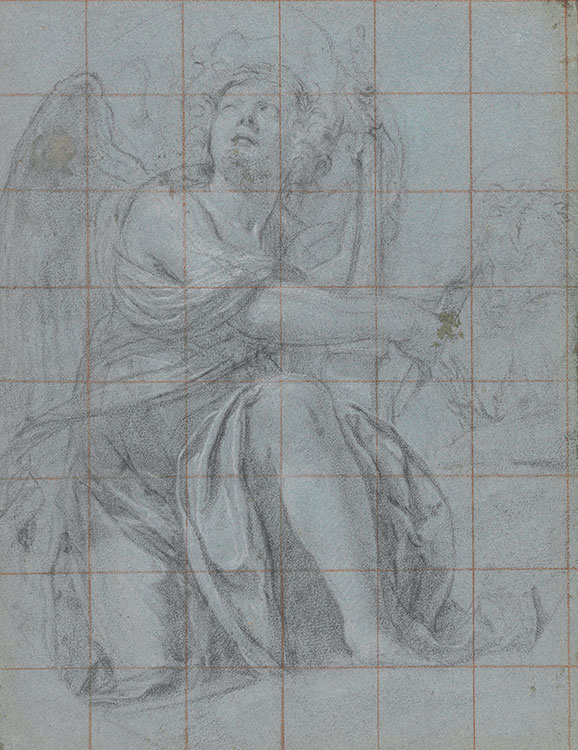
Born into a family of Parisian painters, Vouet spent his early career in Rome working for aristocratic and ecclesiastical patrons. Although he was involved in many painting commissions during those years, few drawings seem to have survived; Kneeling angel may be one of his rare Roman sheets. The robust yet elegant angel is characteristic of Vouet’s early style, with its combination of black and white chalk and the careful description of light and shadow on the drapery folds. The study relates to a chapel vault decoration, featuring musical angels, that the artist painted in the Roman church of San Lorenzo in Lucina.
Attributed to Simon Vouet
French, 1590–1649
Kneeling angel, 1623–24
Black chalk, heightened with white chalk, on blue paper, squared in red chalk
Richard and Mary L. Gray, promised gift to the Morgan Library & Museum
Gray Collection Trust, Art Institute of Chicago
Photography by Jamie Stukenberg, Professional Graphics Inc.
John Marciari: Simon Vouet was born in Paris, but he spent 15 formative years in Italy as a young artist. When he returned home in 1627, he had a revolutionary effect on French painting. Introducing the Baroque style of Caravaggio and the Carracci, training an entire generation of French artists, and becoming the favorite painter of Cardinal Richelieu and King Louis XIII. Vouet's influence extended into the field of draftsmanship, and it's hard to imagine the drawings of Charles Le Brun or Francois Lemoyne seen elsewhere in this exhibition without Vouet's example. Yet, despite the many paintings that survive from Vouet's important time in Italy, there are only a handful of drawings from his Roman years, with this one the most recent discovery. The Kneeling Angel, is a study for a frescoed vault that Vouet painted in the Church of San Lorenzo in Lucina in Rome. A curious feature of the sheet, however, is the lightly sketched face at right. A second figure is present in this location in the fresco, but he does not look like the man in the drawing. Perhaps, while making a study of the angel, Vouet remembered that he had to plan for a second figure there and drew a quick portrait sketch of someone sitting in his studio.
